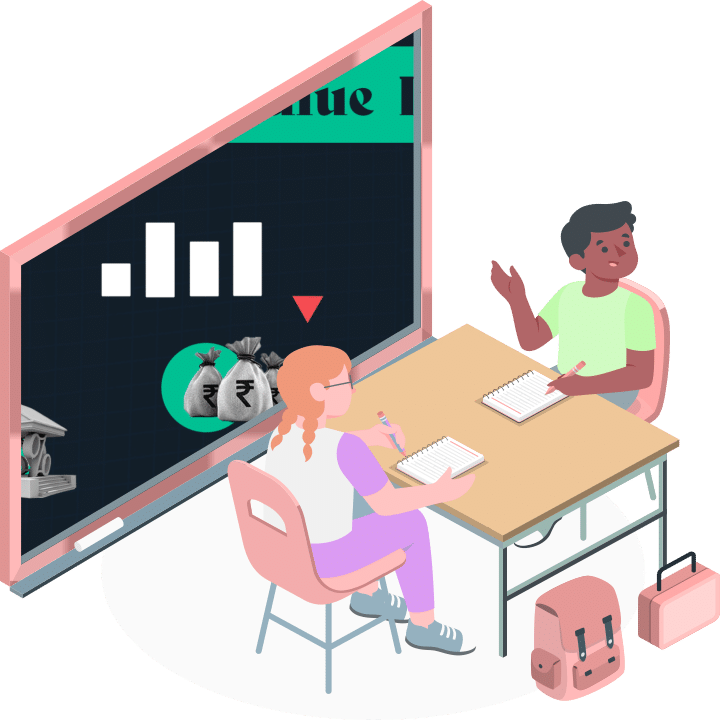When prices go down, it’s generally considered a good thing; at least when it comes to your favourite shopping destinations. When prices go down across the entire economy, however, it’s called deflation, and that’s a whole other ballgame. Deflation is bad news for your country and your money.
Deflation is when consumer and asset prices decrease over time, and purchasing power increases. Essentially, you can buy more goods or services tomorrow with the same amount of money you have today. This is the mirror image of inflation, which is the gradual increase in prices across the economy.
While deflation may seem like a good thing, it can signal an impending recession and hard economic times. When people feel prices are headed down, they delay purchases in the hopes that they can buy things for less at a later date. But lower spending leads to less income for producers, which can lead to unemployment and higher interest rates.
How Is Deflation Measured?
Deflation is measured using economic indicators like the Consumer Price Index (CPI). The CPI tracks the prices of a group of commonly purchased goods and services and publishes the changes every month.
When the prices measured in aggregate by the CPI are lower in one period than they were in the period before, the economy is experiencing deflation. Conversely, when the prices collectively rise, the economy is experiencing inflation.
What are causes of deflation?
There are three reasons why deflation exists as a greater threat than inflation since 2000.
First, exports from China have kept prices low. The country has a lower standard of living, so it can pay its workers less. China also keeps its exchange rate pegged to the dollar, which keeps its exports competitive.
Second, in the 21st century, technology such as computers keeps workers’ productivity high. Most information can be retrieved in seconds from the internet. Workers don’t have to spend time tracking it down. The switch from snail mail to email streamlined business communications.
Third, the excess of aging baby boomers allows corporations to keep wages low. Many boomers have remained in the workforce because they can’t afford to retire. They are willing to accept lower wages to supplement their incomes. These lower costs mean companies haven’t needed to raise prices.
How it’s stopped
To combat deflation, the Federal Reserve stimulates the economy with expansionary monetary policy. It reduces the fed funds rate target and buys Treasury’s using its open market operations. When needed, the Fed uses other tools to increase the money supply. When it increases liquidity in the economy, people often wonder whether the Fed is printing money.
Our elected officials can also offset falling prices with discretionary fiscal policy, or lowering taxes. They can also increase government spending. Both create a temporary deficit. Of course, if the deficit is already at record levels, discretionary fiscal policy becomes less popular.
With more money to spend, people are likely to buy what they want as well as what they need. They’ll stop waiting for prices to fall further. This increase in demand will push prices up, reversing the deflationary trend.
How Deflation Has Played a Role in History
The Great Recession-There was much concern about deflation in the U.S. recession spanning late 2007 to mid-2009. Commodity prices fell, and debtors found it harder to repay loans. The stock market was down, unemployment was up, and home prices dropped precipitously. Economists were concerned that deflation would lead to a deep downward economic spiral, but that didn’t happen. One study published in the American Journal of Macroeconomics suggests that the financial crisis at the beginning of the period managed to prop up inflation. Because interest rates were so high at the onset of the recession, some companies couldn’t afford to drop prices, which may have helped the economy avoid widespread deflation.
The Great Depression- Deflation was an accelerator of one of the toughest U.S. economic periods, the Great Depression. Although it began as a recession in 1929, rapidly decreasing demand for goods and services caused prices to drop significantly, which led to the collapse of many companies and rising rates of unemployment. Between the summer of 1929 and early 1933, the wholesale price index fell 33%, and unemployment peaked at above 20%.
Price deflation due to the Great Depression happened in virtually every other industrialized country in the world. In the U.S., output didn’t return to the previous long-term trend path until 1942.
Why Deflation Is Worse than Inflation?
The opposite of deflation is inflation. Inflation is when prices rise over time. Both economic responses are very difficult to combat once entrenched because people’s expectations worsen price trends. When prices rise during inflation, they create an asset bubble. This bubble can be burst by central banks raising interest rates.
Former Fed Chairman Paul Volcker proved this in the 1980s. He fought double-digit inflation by raising the fed funds rate to 20%.3He kept it there even though it caused a recession. He had to take this drastic action to convince everyone that inflation could actually be tamed. Thanks to Volcker, central bankers now know the most important tool in combating inflation or deflation is controlling people’s expectations of price changes.
